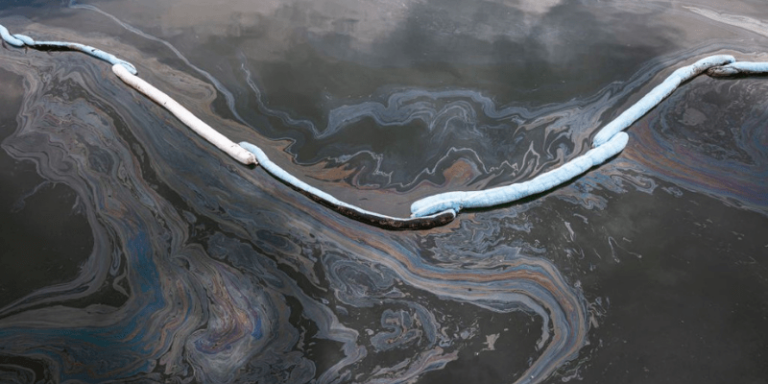North Dakota Pipeline Spill: Not a Public Health Threat
No drinking water or animals seem to be affected and cleanup is under way.
By: Sarah Cowgill | November 6, 2019 | 416 Words

(Photo by: Citizen of the Planet/Universal Images Group via Getty Images)
Last week, the Keystone Pipeline ruptured in Edinburg, North Dakota. About 9,120 barrels – 380,000 gallons – of crude oil is said to be affecting a wetland area covering about 2,500 square yards of land: To put into perspective, less than the size of football field.
North Dakota Gov. Doug Burgum assures residents of the state that no drinking water has been affected by the spill and that he has “Urged the company to review its pipeline inspection and monitoring programs to ensure pipeline integrity. The health and safety of our citizens will remain our top priority throughout this process.”
Gov. Burgum issued a statement days ago that the company that runs the pipeline, TC Energy, has promised to “clean up and remediate the site as thoroughly and quickly as possible.”
The Keystone Pipeline spans from Canada to the Midwestern U.S. and has been channeling crude oil from Canadian provinces Saskatchewan and Manitoba. Every day, nearly 23 million gallons travel from Canada to American refineries without incident.
The most recent spill comes only two years after 407,000 gallons of oil flooded onto farmland in northwestern South Dakota. And although the governor and the state’s director of the Division of Water Quality, Karl Rockeman, say the spill will harm vegetation and soil within the wetland area, the leak is otherwise contained within the original spill zone: “At this time, we don’t see any impact to public health … there should be no disruption and no reason for any special precautions.”
According to TC Energy, they detected a significant drop in pressure on October 29, at 10:20 pm, and went immediately into damage control processes including notifying state and federal regulators, including the Pipelines and Hazardous Materials Safety Administration (PHMSA) and the National Response Center (NRC). Roads surrounding the affected area were blocked to traffic as clean-up efforts went into effect. And workers are now expected to dig up a segment of the pipeline to inspect its condition to determine what caused the spill.
“The safety of the public and environment are our top priorities and we will continue to provide updates as they become available,” TC Energy offered in a statement assuring that air quality, wildlife, and water monitoring is underway. To date, there are no reports of injuries to wildlife.
All steps to secure and protect the communities involved were taken, but Gov. Burgum has gone a step further, encouraging Girling and TC Energy to join the Intelligent Pipeline Integrity Program (iPIPE) – an industry-led consortium working together on emerging technologies to prevent pipeline leaks.
















